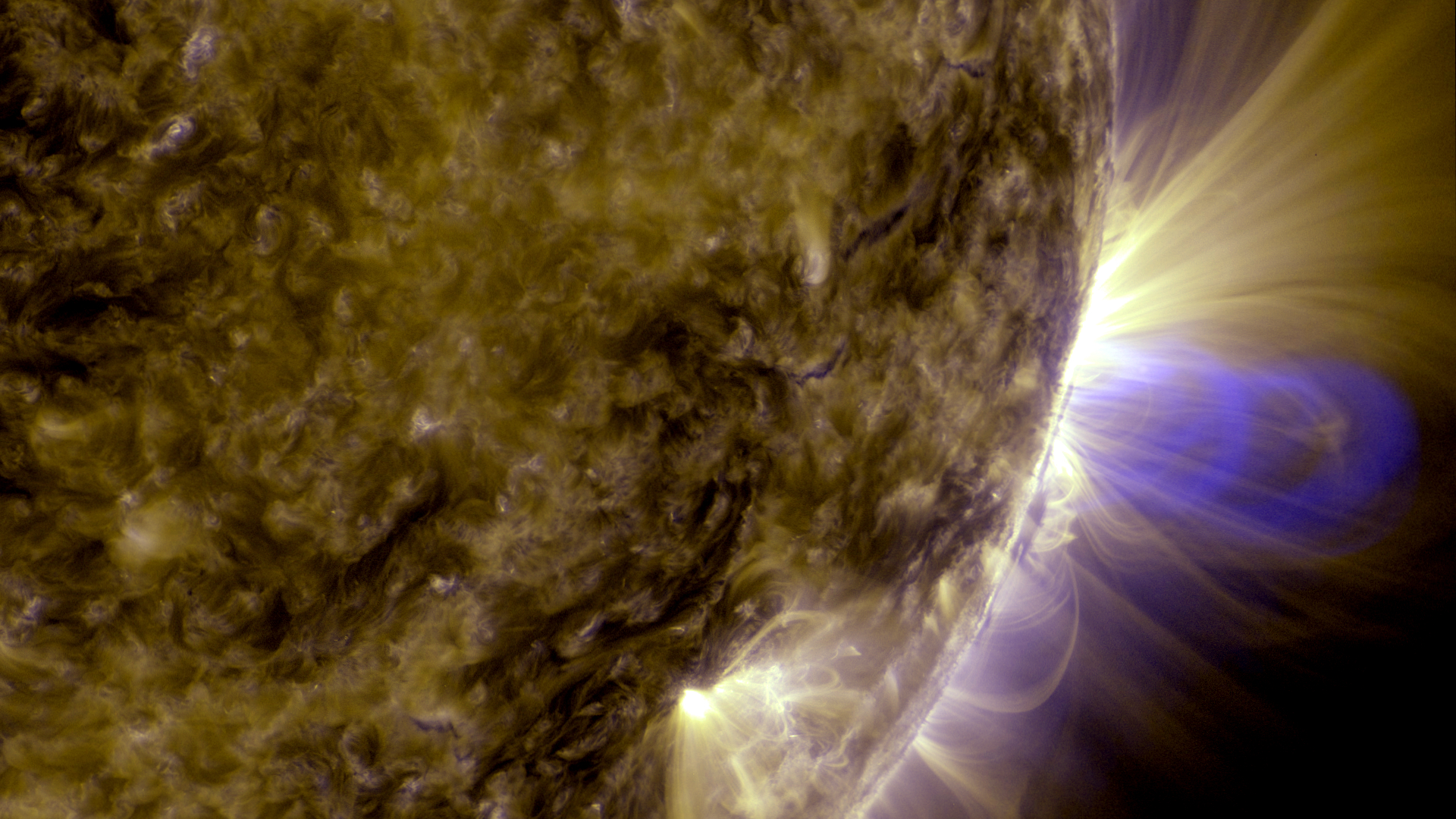SDO: September 13, 2012 Earth Eclipse
Twice a year, for three weeks near the equinox, NASA's Solar Dynamics Observatory (SDO) moves into its eclipse season — a time when Earth blocks its view of the sun for a period of time each day. Any spacecraft observing the sun from an orbit around Earth has to contend with such eclipses, but SDO's orbit is designed to minimize them as much as possible. On September 13, during the Fall 2012 eclipse season, SDO experienced on such eclipse followed by an unusually large, dark prominence that lifted up off the surface. The prominence was visible in extreme ultraviolet light with a wavelength of 304 angstroms. This wavelength highlights plasma with temperatures of around 50,000 Kelvin. The Atmospheric Imaging Assembly on NASA's Solar Dynamics Observatory captured the event at 4k resolution and a high imaging cadence of one image every 12 seconds.
HD movie of the prominence & eclipse
Colorized 4Kx4K SDO imagery of the prominence and eclipse.
Credits
Please give credit for this item to:
NASA's Goddard Space Flight Center Scientific Visualization Studio, the SDO Science Team, and the Virtual Solar Observatory.
-
Animator
- Tom Bridgman (Global Science and Technology, Inc.)
-
Producer
- Scott Wiessinger (USRA)
-
Writer
- Karen Fox (ADNET Systems, Inc.)
Missions
This page is related to the following missions:Series
This page can be found in the following series:Datasets used
-
AIA 304 (304 Filter) [SDO: AIA]
ID: 677This dataset can be found at: http://jsoc.stanford.edu/
See all pages that use this dataset
Note: While we identify the data sets used on this page, we do not store any further details, nor the data sets themselves on our site.
Release date
This page was originally published on Monday, February 11, 2013.
This page was last updated on Sunday, February 2, 2025 at 10:10 PM EST.
